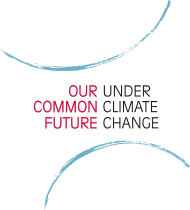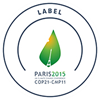�
Our Common Future Under Climate Change
International Scientific Conference 7-10 JULY 2015 Paris, France

Workshop on scenario-guided policy analysis for development, food security and environment in the Andean region. E van de Grift
An inclusive way to climate-proof development policies and plans
201506-29
By Joost Vervoort and Cecilia Schubert, CGIAR Research Program on Climate Change, Agriculture and Food Security
Joost Vervoort is presenting at the CFCC15 session Scenarios, Public Deliberation and Decisions on Day 3.�
Envisioning future scenarios for a country or region can be a powerful way to explore future uncertainties. However, scenarios are not strategies. Instead, they outline contexts that can be used for challenging decision-making. And challenging is really the word, as the world braces itself for increasing climate variability that spell huge uncertainties for the future, to which policies and governance systems have to adapt. �
An elaborate scenario-guided planning approach developed by a team from the CGIAR Research Program on Climate Change, Agriculture and Food Security (CCAFS) and Oxford University has for the past few years been making headway across the globe, as more and more policy makers are seeing the value of climate-proofing their agriculture and food security plans and strategies.�
Scenario-guided policy planning across the globe�
The future scenarios team carries out its work in Central America, the Andes, Southeast Asia as well as East and West Africa and South Asia, while devoting a large part of its work to continuously evaluate the use of scenarios for policy development to further improve activities.
Spread over six regions, the team builds an open dialogue with government representatives before venturing into the actual work, in which drafts of policies, implementation plans or investments are tested against tailor-made scenarios. Working with on-going policy processes increases the usefulness of the scenario-guided planning work and ensures that strengthened policies are implemented.�
When the policy or strategy has been selected, participants jointly develop regional scenarios, for instance for the ECOWAS region in West Africa, using an innovative method that combines interacting drivers of change. The team uses two agricultural economic models, GLOBIOM developed by International Institute for Applied Systems Analysis (IIASA) and the IMPACT model by International Food Policy Research Institute (IFPRI), to explore how the developed regional scenarios will impact agriculture and food security in the context of global markets, climate change and other drivers.�
Participants imagine the various scenarios given a number of relevant stressors and changes, including urbanization, poverty rates and population growth, use of natural resources and water management, private sector and government development. Here the scenarios vary from fairly positive narratives with sustainable and equal development happening across the country, to catastrophic, with high poverty rates, environmental destruction and weak government structures plaguing citizens. Many scenarios provide a mix of opportunities and challenges for decision-makers. The outlined future worlds, or scenarios, are used in detailed analyses of the policy drafts, and suggested changes by participants are taken up in new drafts.�
People who have been involved have mentioned how the process helped them look at other aspects and elements that can impact and form the policy to ensure the strategy or plan is made more realistic and inclusive. Participant from the Ministry of Agriculture, Livestock, Aquaculture and Fisheries (MAGAP) in Ecuador said after the process:�
�There are some optimistic scenarios, but it was the worst case scenarios that allowed us to address the whole policy in a concrete way, to determine whether we are doing it right; whether the current policies are appropriate to reach positive environmental and mitigation goals.�
The team has made progress in various countries. In Cambodia, future scenario development is now part of the country�s Climate Change Priorities Action Plan. The Tanzanian Government is currently drafting its third version of the new National Environment Management Policy, which contains scenario-guided improvements. In Honduras, policy makers are investigating how a scenario-guided climate management strategy for agriculture and livestock, developed using scenarios, can be translated into regional policy plans. �
When studying the scenarios processes, hypotheses about best practice and indicators have been formulated with regional partners. Research results show that a focus on specific policies has yielded the clearest impacts; that building trust between researchers and policy makers has been key to ensure an effective, open process; the scenarios have to be flexible enough to be adapted for specific policy concerns but credible enough to be seen as useful; challenges associated with government turn-over and re-structuring had to be overcome by quickly engaging with new civil servants, and scenario-guided policy processes have to be highly transparent for those not involved in them. The team is translating these lessons into recommendations that will help scale up and respond to a widespread need for effective scenario-guided policy development.
Learn more, download Scenarios flyer: Testing climate and agriculture policy against future scenarios (PDF)�
Joost Vervoort is a Scenarios Officer at CCAFS and Oxford University and Cecilia Schubert is CCAFS' Flagship 4 Communication Officer.
This is part of a blog series profiling climate scientists, economists, social scientists and civil society members who are presenting and discussing innovative climate science at Our Common Future. For more follow and #CFCC15 on Twitter.







